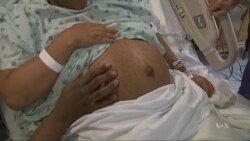Women and doctors around the world soon will have clearer information on prescription medicines and how they impact fertility, a fetus and a baby that is nursing.
In the United States, women take between three and five prescription drugs during their pregnancy, according to the Food and Drug Administration. Other women on prescription drugs want to breastfeed their babies. Millions of other women are trying to conceive.
While the drugs might be needed to control anything from high blood pressure to mental illness, they might harm a developing fetus or a nursing baby.
Until now, a grading system classified drugs with letters — A, B , C, D and X, with A being the least risky, X being the most. But Dr. Edward McCabe, medical director of the March of Dimes, a group that works to reduce birth defects and pre-term births, said the system "was not informing either the consumers or professionals."
Abilify, a drug used to help people with bipolar disorder, is a grade C drug, but its container doesn't say this, and there are no studies in humans that show what effect this drug might have on a fetus or a nursing baby.
In an online press release, the FDA said the five-letter system would be replaced by new labels with more detailed, up-to-date information so doctors can help their patients make better choices about the risks of certain drugs before and during pregnancy or while breastfeeding.
McCabe said he that welcomed the FDA's new ruling but that what's really needed are more clinical trials and more research.
"We need to recognize that research benefits individuals. Not doing research on pregnant women, women of childbearing age, does a disservice to them," he said. "There is a risk of not knowing information and we need to work and see how we can do this safely, but then once we’ve determined that it is safe, if a drug is being used in pregnant women, we should be studying it."
McCabe said that for many drugs, people lack the information they need to make good choices.








